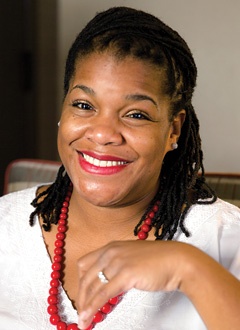
This post is taken from the foreword to Rozlyn Linder's The Big Book of Details: 46 Moves For Teaching Writers To Elaborate, out now.
By Harvey "Smokey" Daniels
Yikes, I cringe when I think of all the times I scrawled add more detail in the margin of some student’s paper (usually not in red ink, I wasn’t that mean, but still). OK, no excuses, but I was a victim of the benighted times, nobody told me any different, and I hadn’t met Roz Linder yet.
This lively and practical book addresses a persistent problem in our profession. We still don’t show kids how to write. More broadly, we don’t demonstrate how literate people think. Sure, we’re great at assigning, demanding, and commanding literacy activities of all kinds: “Read Chapter 7 for Friday.” “Write an essay on this article.” “Take a position on this controversy and support it with evidence from the text.” But when it comes to the how-to part, where we ought to demonstrate how such mental work gets done, we too often abandon our students and let them guess how a skilled reader or writer might tackle the task. Sometimes we even withhold further “teaching” until assessment time, when we tally up the wrong answers on the comprehension quiz or drench kids’ papers with red ink.
On the reading side, this gap has been slowly closing. We have learned from the ground-breaking research of David Pearson (percolating up since 1983, what a slow system!) how to show kids ways of making sense of text. We now recognize a handful of specific thinking strategies that proficient readers (like us) use to comprehend—moves that can be named, explained, and explicitly taught. So we open up our own heads and share those mental processes though powerful modeling lessons like think-alouds.
—
We may feel less confident about ourselves as model writers than we do as readers
—
In writing, the showing piece has been slower to develop. It’s rare for teachers to open up their own heads and demonstrate their own writing, let alone simultaneously explain what mental moves they are using along the way. And there’s an extra challenge: we teachers may feel less confident about ourselves as model writers than we do as readers. As Jim Vopat says in Writing Circles, almost everyone in America, adult or child, marches among “the writing wounded” after the bruising kind of writing instruction typically offered in school.
Into this fraught and urgent situation steps Roz Linder, kid wise, whip smart, and brimming with ready-to-use ideas. Roz gently pushes us forward, handing out tools we can actually use and showing us clear-cut writing strategy lessons we can confidently and comfortably offer our students. Writing doesn’t have to be a mysterious black box that only “good writers” are able to activate. On the contrary, the mechanisms of skillful writing can be put on open display for all to see and test-drive.
It worked for me. As a person who’s written a bunch of books (and modeled my own writing for kids of many ages), Roz’s resource was an eye-opener. Smugly, I began The Big Book of Details thinking that I was hyperaware of my own mental moves as a writer. Did I get a lesson! As I kept reading, Roz named many strategies I do regularly use but never knew I did. What I mean is, I frequently employed these moves but did so automatically, below the level of awareness, without conscious intent. They just “came to me.”
—
But now we're getting there
—
I could not have taught these moves to students, because I wasn’t aware enough of what was happening in my head as I wrote. But here was Roz, pointing out, naming, and showing me how to share dozens of my own subconscious moves: “zoom in,” “INGS up front,” “pop culture references,” “think and act,” “invisible tags,” and “adverb commas.” Who knew?
What Roz offers us in writing instruction parallels what we have been doing with reading. Until David Pearson (and Steph Harvey, Ellin Keene, Debbie Miller, Cris Tovani, Kelly Gallagher, and Tanny McGregor) came along, even veteran teachers didn’t consciously understand their own reading/thinking processes well. So it was hard for them to demonstrate their thinking explicitly. But now we’re getting there. Roz is doing the same thing for writing; helping us better understand our own writing-as-thinking strategies, so we can show them to kids.
Roz Linder traffics in teaching ideas that are “sticky”—that grab you right away, that are memorable, usable, and reliable. This book is just about the stickiest teacher resource you’ll ever dip into. Watch out! It won’t let go of you.
The Big Book of Details: 46 Moves for Teaching Writers to Elaborate is out now. Click here to learn more.
♦ ♦ ♦ ♦
 As a literacy specialist, a blogger, a high-demand consultant, and the author of The Big Book of Details and the bestselling Chart Sense series, Rozlyn Linder loves to help colleagues take complicated research and turn it into classroom-ready teaching ideas. Connect with her on Twitter @rozlinder or at her web site.
As a literacy specialist, a blogger, a high-demand consultant, and the author of The Big Book of Details and the bestselling Chart Sense series, Rozlyn Linder loves to help colleagues take complicated research and turn it into classroom-ready teaching ideas. Connect with her on Twitter @rozlinder or at her web site.


